Mohr-Claussen Syndrome: A Rare Case
Manjiri Uttam Joshi1, Namish Jagdish Chandra Batra2, Ankita Pradeep Patel3
1 Reader and Head, Department of Oral Medicine and Radiology, MP Dental College and Hospital, Vadodara, Gujarat, India.
2 Reader, Department of Oral and Maxillofacial Surgery, MP Dental College and Hospital, Vadodara, Gujarat, India.
3 Intern, MP Dental College and Hospital, Vadodara, Gujarat, India.
NAME, ADDRESS, E-MAIL ID OF THE CORRESPONDING AUTHOR: Dr. Manjiri Uttam Joshi, Reader and Head, Department of Oral Medicine and Radiology, Manubhai Patel Dental College, Vishwajyoti Ashram, Near Vishwamitri Bridge, Munjmahuda, Vadodara – 390011, Gujarat, India.
E-mail: maitri.joshi2@gmail.com
A 22-year-old, female patient reported with complaint of poor esthetics. Her past medical, dental, personal as well as family histories were non-contributory. After performing thorough general and extra oral clinical examination under aseptic precautions, various orofacial abnormalities were noted down which included brachydactyly of a thumb and an index finger of upper extremities on right side [Table/Fig-1] and hypertelorism with frontal bossing and depressed nasal bridge [Table/Fig-2]. Intra oral examination revealed hyperplastic frenula [Table/Fig-3], high lingual frenal attachment with lobed tongue [Table/Fig-4], multiple supernumerary teeth and fused teeth [Table/Fig-5]. Moreover, radiographic investigations were done which showed supernumerary teeth, fusion of two teeth and alveolar clefts in OPG and IOPA [Table/Fig-6,7]. A hand and wrist radiograph showed defect in phalanges [Table/Fig-8]. Review of literature shows that the diagnosis is based on clinical findings [Table/Fig-9] [1]. There are total 13 types of Oro-Facial Digital Syndrome (OFDS) out of which clinical features of Type 1 and Type 2 must be ruled out properly.
Showing brachydactyly of a thumb and an index finger of upper extremities.
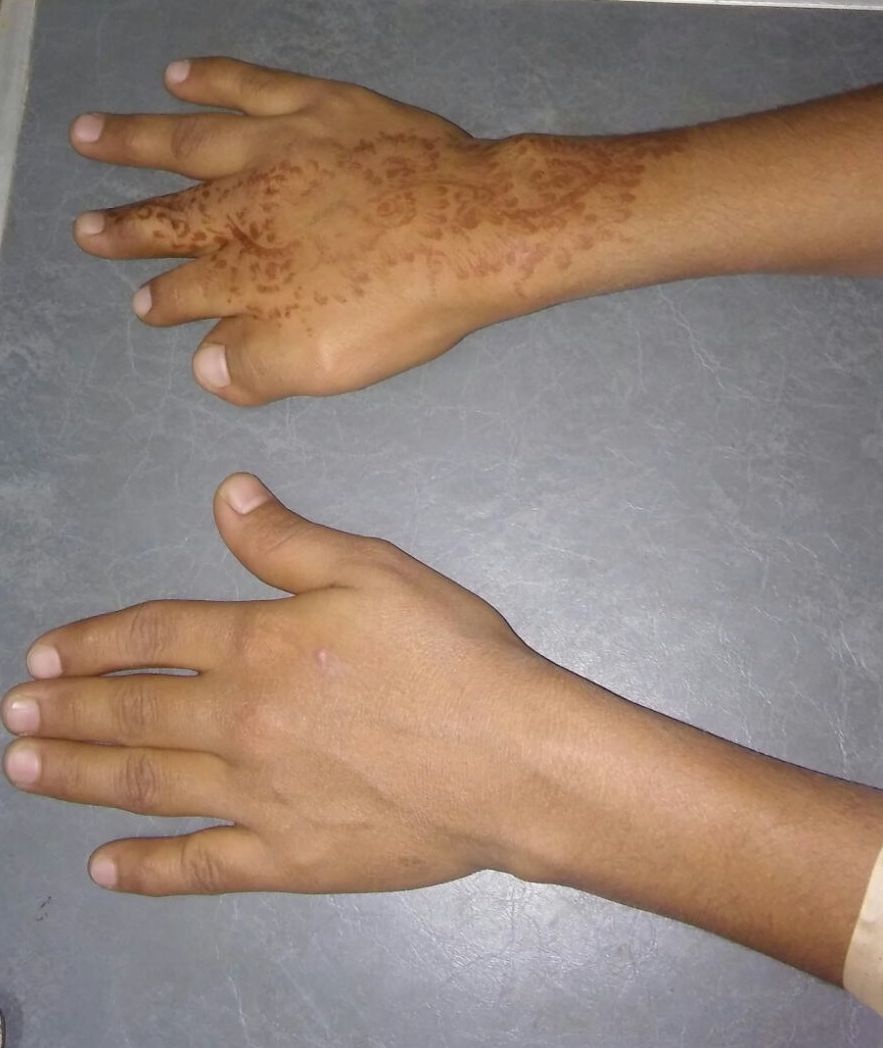
Showing frontal bossing and depressed nasal bridge.
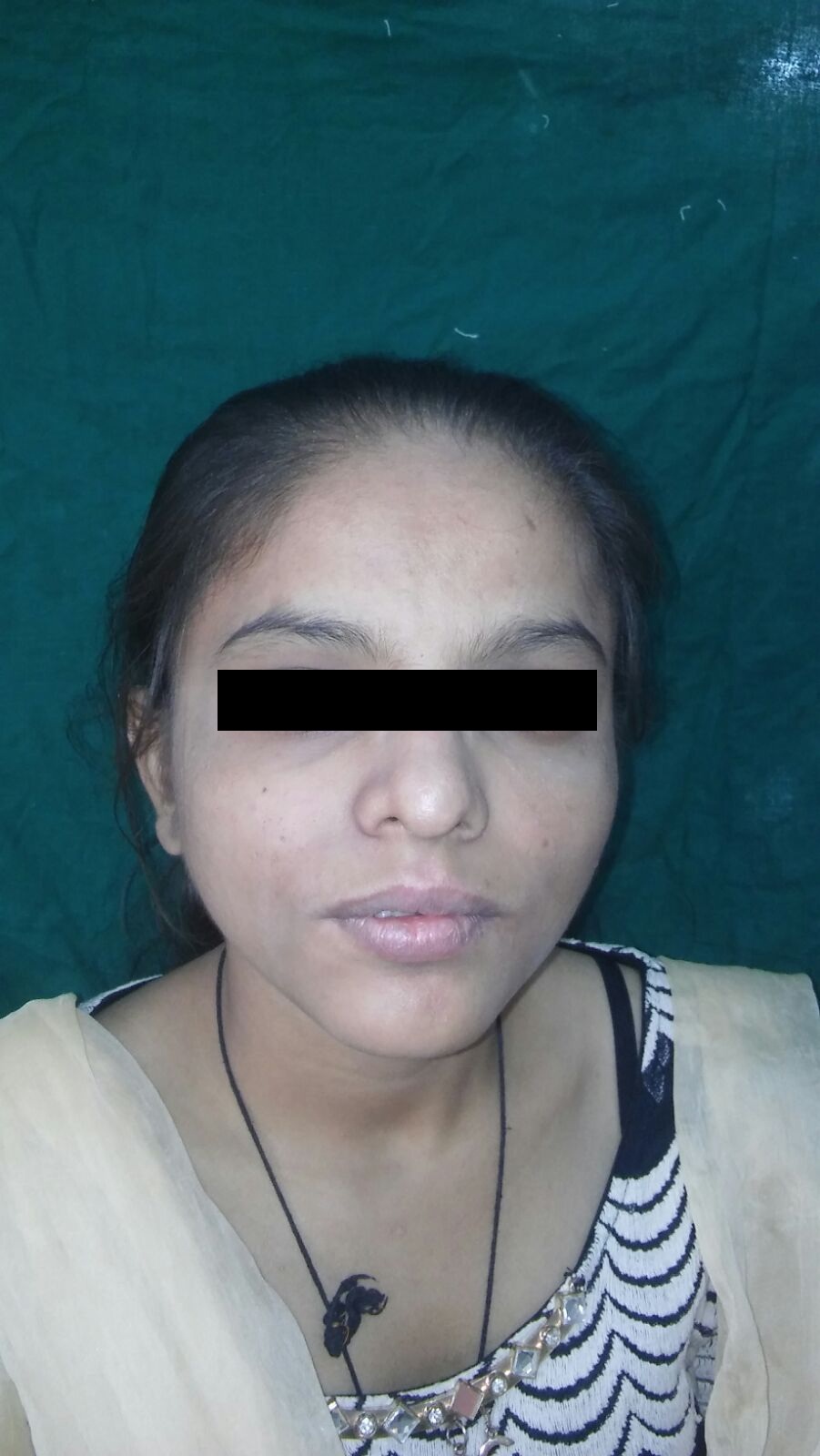
Showing hyperplastic frenula a) maxilla b) mandible.

Showing high frenal attachment with lobed tongue.
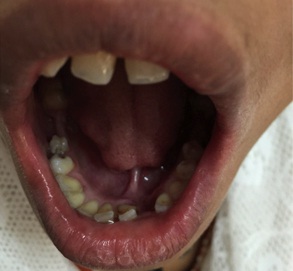
Showing multiple supernumerary teeth and fused teeth.
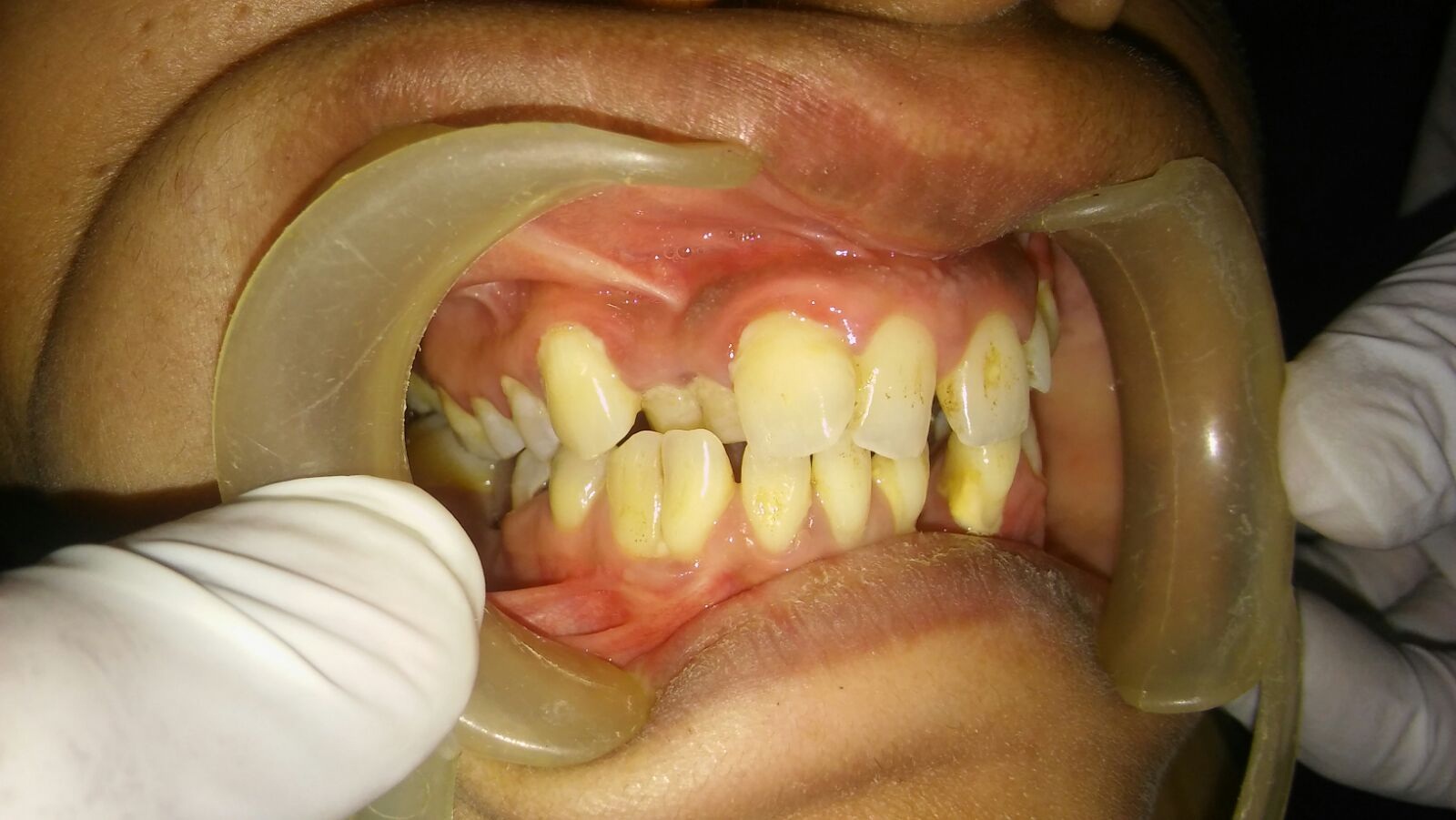
Showing radiographic evidence of alveolar clefts in upper and lower front tooth region.
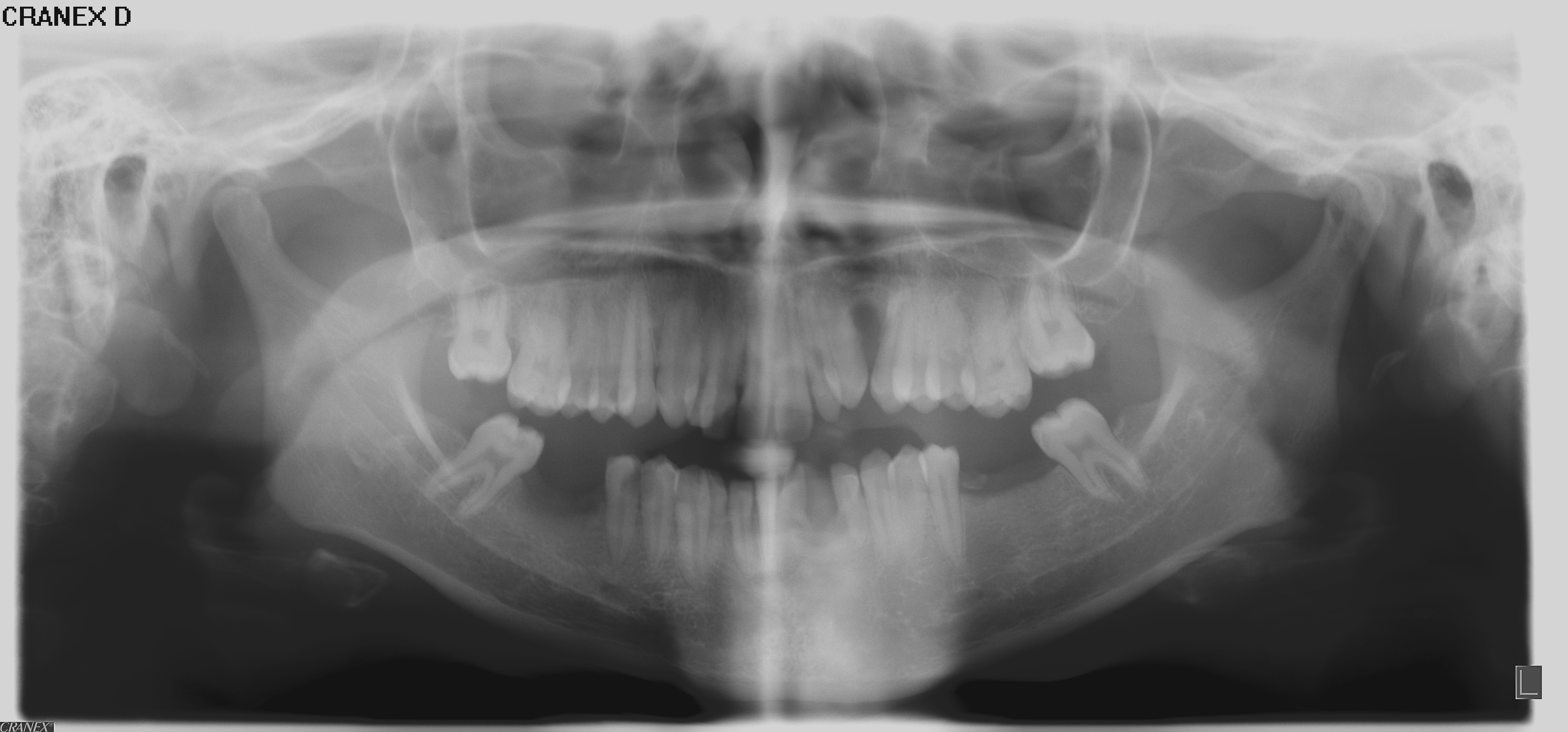
Fusion of canine and a supernumerary tooth in lower right back tooth region.
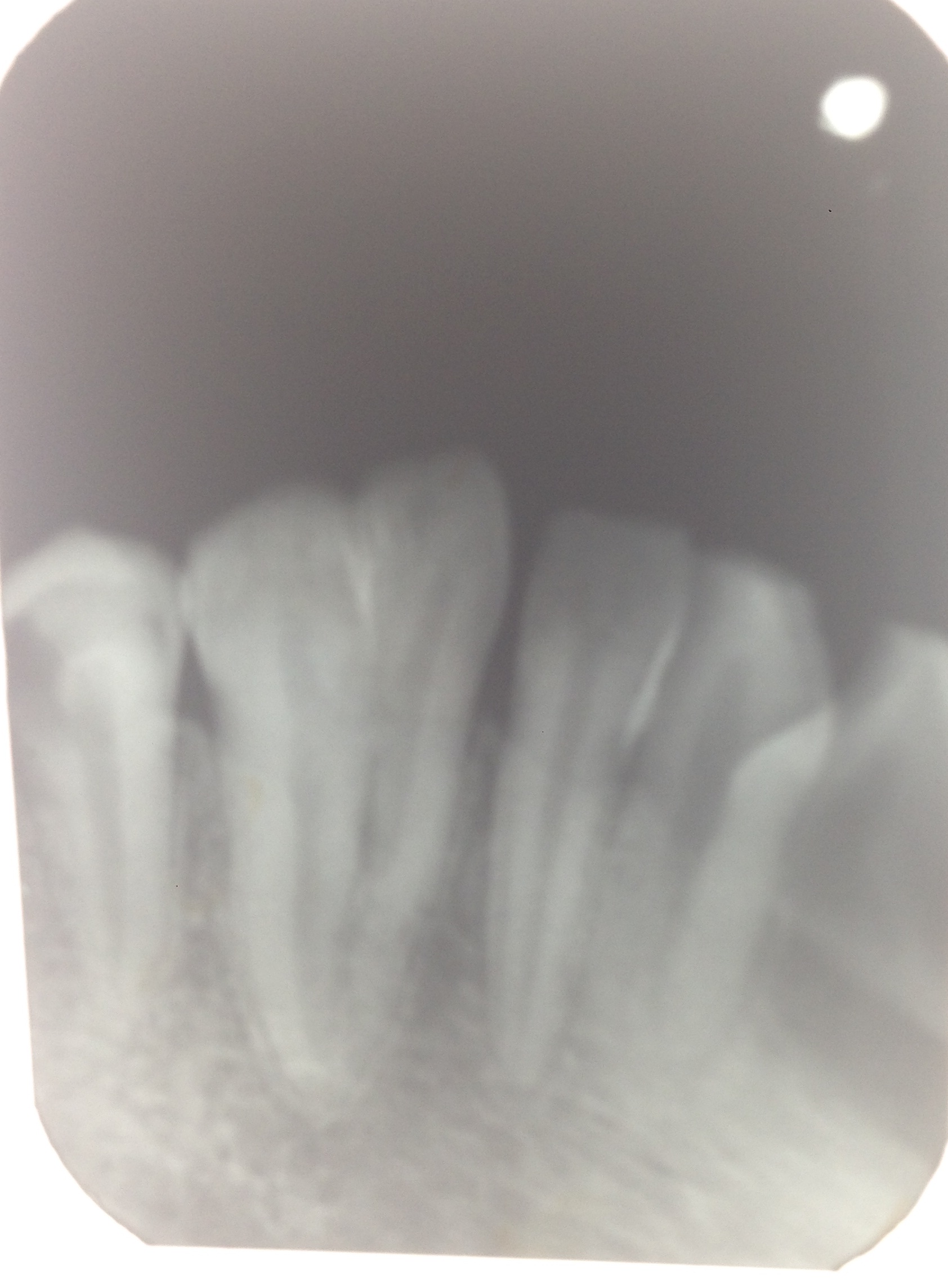
Showing hand-wrist radiograph with defect in phalanges.
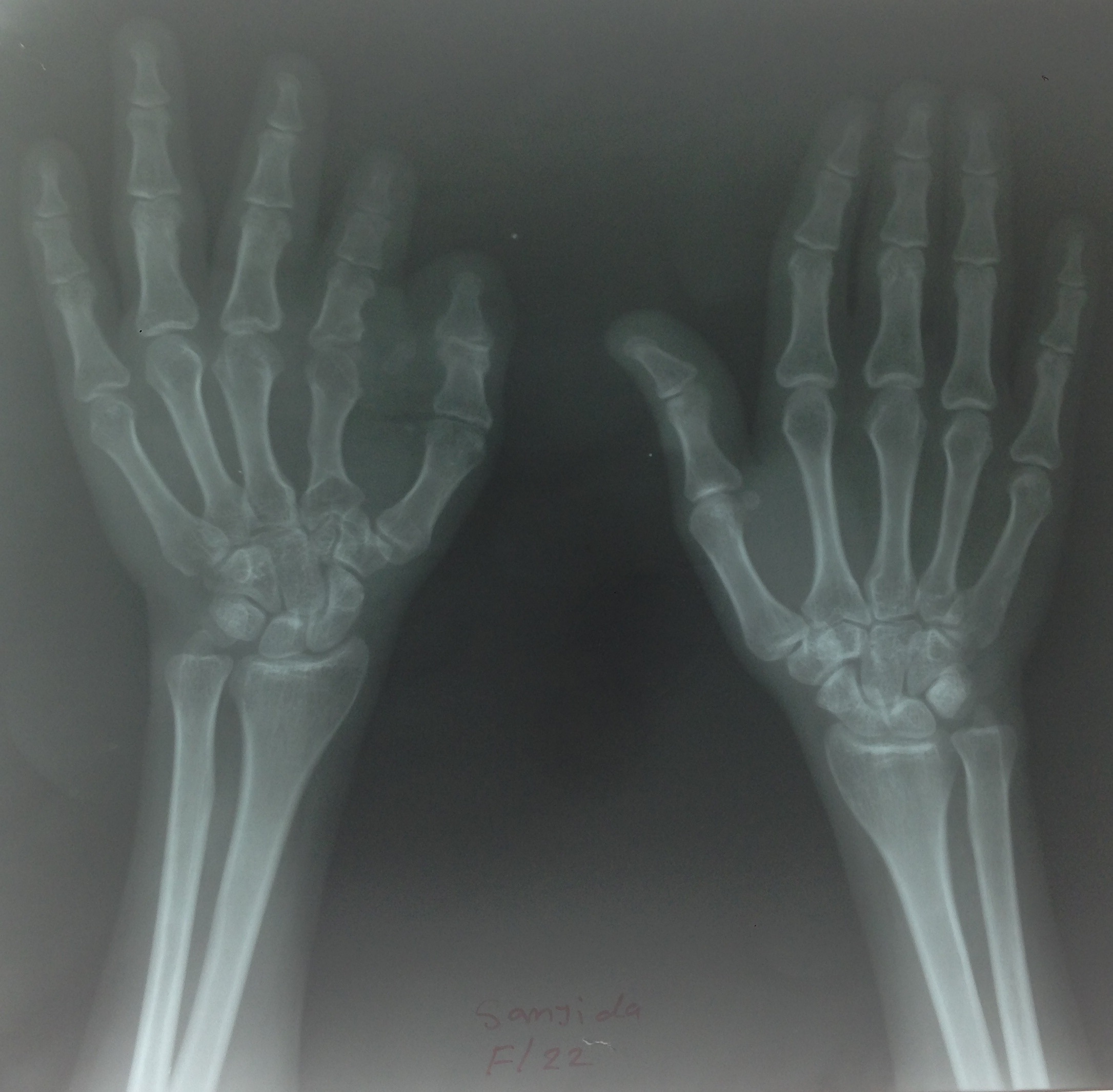
Differences between orofacial features in Type 1 and Type 2 OFDS.
| Type of OFDS | Clinical features |
|---|
| OFDS-I(Papillon-Léage-Psaume)X-linked | OralCleft lip and palatelobulated tonguetongue nodules (hamartomas)FacialHypertelorismDigitalBrachydactyly, syndactyly,clinodactylyreduplicated halluxOthersCerebral abnormalitiesrenal dysplasiasmental retardation |
| OFDS-II(Mohr-Claussen) | OralCleft lip and palatelobulated tonguemicrognathiaFacialBroad nasal bridgefrontal bossingDigitalBrachydactyly, syndactyly,clinodactyly, polydactylyreduplicated halluxOthersConductive hearing loss congenital heart diseasenormal intelligence |
Differential diagnoses which can be included are Type 1 OFDS and Acro–fronto–facio–nasal syndrome. Type 1 can be differentiated on clinical grounds whereas mental retardation and broad notched nasal tip are prime features of Acro–fronto–facio–nasal syndrome apart from oral, facial and digital abnormalities.
After primary assessment and detailed case-history, patient was diagnosed as case of OFDS Type 2, as majority of the features were in favour of the same. Patient was then advised full mouth rehabilitation with multi-disciplinary approach.
Discussion
According to Gorlin and Psaume, the first observation about OFDS was back in 1883, which is characterized by developmental defects of the oral cavity, facial structures and digits of hands and feet [2]. There are about 13 subtypes of OFDS reported in literature [3] out of which Type 2 OFDS is the most common variant that is seen clinically, which is named as Mohr-Claussen Syndrome (MCS) [4].
MCS has a wide range of clinical features. Developmental defects of the oral cavity, abnormal facial features and digits are main manifestation of this syndrome. Abnormalities that occur in various types of oral-facial-digital syndrome include a cleft in the tongue, unusually lobed tongue and benign tumors or nodules on the tongue [5]. Affected individuals may also have extra, missing, or defective teeth. Another common feature is cleft palate. Some people with OFDS have hyperplastic frenula that abnormally attach the lip to the gums.
Distinctive facial features often associated with OFDS include cleft lip; a depressed nasal bridge; and hypertelorism (increased inter papillary distance) [5].
Abnormalities of the digits can affect both the fingers and the toes in people with OFDS. These abnormalities include syndactyly, brachydactyly, clinodactyly and polydactyly [6].
Presence of clinical features may vary depending upon type of OFDS. Although, many of the oral, facial and digital abnormalities should be noted to give clinical diagnosis of OFDS irrespective of their intensity.
Treatment of malformations of the oral cavity involves teamwork and multispecialty approach in different areas of dentistry. Hence, we as a dental professional must have sound knowledge so that such rare conditions are not missed out. One should be able to correlate these dental abnormalities with the general physical abnormalities and not just merely concentrate on oral conditions.
[1]. Melnick M, Shields ED, Orofaciodigital syndrome type I: a phenotypic and genetic analysis Oral Surg Oral Med Oral Pathol 1975 40:599-610. [Google Scholar]
[2]. Sousa S, Kanan DM, The oro-facial digital syndome- manifestations in oral cavity Braz Dent J 1994 5(1):71-74. [Google Scholar]
[3]. Kalyan M, Kanitkar S, John R, Gireesh G, Bhate A, Mithun M, Oro-facial-digital syndrome type II J Assoc Physicians India 2012 60:50-52. [Google Scholar]
[4]. Sakai N, Nakakita N, Yamazaki Y, Ui K, Uchinuma E, Oro-facial-digital syndrome type II (Mohr syndrome): clinical and genetic manifestations J Craniofac Surg 2002 13:321-26. [Google Scholar]
[5]. Papillon-Leage Psaume J, Hereditary abnormality of the buccal mucosa: abnormal bands and frenula Revue Stomatol 1954 55:209-27. [Google Scholar]
[6]. Biswas A, Ghosh JK, Sinha MK, Basu K, Chatterjee S, Mohr- Claussen syndrome or oral-facial-digital syndrome (OFDS) type-II J Pak Med Assoc 2009 59:484-86. [Google Scholar]